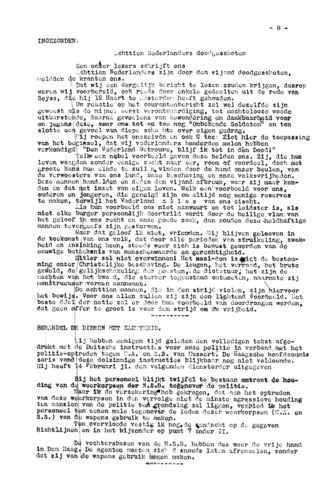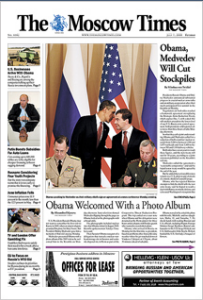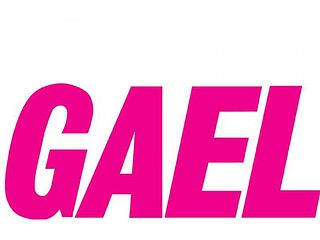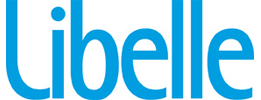
Het Parool is an Amsterdam-based daily newspaper. It was first published on 10 February 1941 as a resistance paper during the German occupation of the Netherlands (1940–1945). In English, its name means The Password or The Motto.

Aamulehti is a Finnish-language daily newspaper published in Tampere, Finland. Established in 1881 by Finnish patriots in Tampere, the newspaper aimed to bolster the Finnish language and people's identity during Russia's reign over Finland. Throughout the Cold War, Aamulehti was accused by the Soviet Union of spreading US propaganda, leading to protests from the Soviet Embassy in Helsinki. In the 1980s, the newspaper's parent company acquired and later closed down Uusi Suomi. In 2014, Aamulehti transitioned from broadsheet to tabloid format.

Humo, stylized in all caps, is a popular Dutch-language Belgian weekly radio and television magazine.

The Moscow Times is an independent English-language and Russian-language online newspaper. It was in print in Russia from 1992 until 2017 and was distributed free of charge at places frequented by English-speaking tourists and expatriates, such as hotels, cafés, embassies, and airlines, and also by subscription. The newspaper was popular among foreign citizens residing in Moscow and English-speaking Russians. In November 2015, the newspaper changed its design and type from daily to weekly and increased the number of pages to 24.

DPG Media Group is a Belgian media company also active in the Netherlands and Denmark. The exact ownership structure is not clear; it is believed that the group is mainly owned by the Belgian Van Thillo family. The company employs about 6,000 people.
Mass media in the Netherlands – television, radio, newspapers, magazines – are characterised by a tradition of politico-denominational segregation ("pillarisation") on the one hand and an increasing degree of commercialism on the other.

HP/De Tijd is a Dutch language monthly opinion magazine. Its editorial offices are in Amsterdam, Netherlands. Alongside De Groene Amsterdammer, Vrij Nederland and Elsevier, it is one of the most influential Dutch opinion magazines.
The Nieuwe Revu is a weekly general interest magazine from the Netherlands, published on Wednesdays and written in Dutch.
Ny Teknik is a weekly Swedish magazine with news, debates and ads in the field of technology and engineering. It is published in Stockholm, Sweden.

Intermediair is a Dutch website for "higher educated professionals in the fields of management, consulting, personnel counselling, financial administration and controlling, and law."
The mass media in Belgium is characterized by its diversity due to the linguistic divide in the country.

Viva (1975–2021) was a weekly fashion magazine for women, published in the Netherlands.
Margriet is a Dutch weekly magazine for women of all ages, which publishes articles on fashion, beauty, health, nutrition, relationships, and society. Formerly published by Verenigde Nederlandse Uitgeverijen, it is owned and published by Sanoma after the latter took over VNU's magazine division.
Donald Duck is the Dutch flagship weekly Disney comics magazine, first published on October 25, 1952.

Gael is a French language monthly women's and lifestyle magazine published monthly in Mechelen, Belgium. It has been in circulation since 1988.
Femmes d'Aujourd'hui is a weekly women's magazine published in Mechelen, Belgium. Founded in 1933, it is one of the oldest magazines in the country and the first Belgian women's magazine.

Libelle is a Flemish weekly lifestyle and women's magazine based in Mechelen, Belgium. The magazine is the spin-off the magazine with the same name, Libelle, published in the Netherlands.
Het Rijk der Vrouw was a Belgian women's magazine published in Brussels between 1925 and 1990.
Vitaya is a former women's magazine published in Belgium which was founded in 2001. The magazine was owned by De Persgroep. In February 2017, Vitaya was merged with another Persgroep title, Goed Gevoel.
Cosmopolitan Russia was the Russian edition of Cosmopolitan magazine. It was the first international women's magazine published in the post-Soviet period in Russia. It changed its title to The Voice Mag and ended its affiliation with Cosmopolitan magazine in March 2022 following the Russian invasion of Ukraine.











